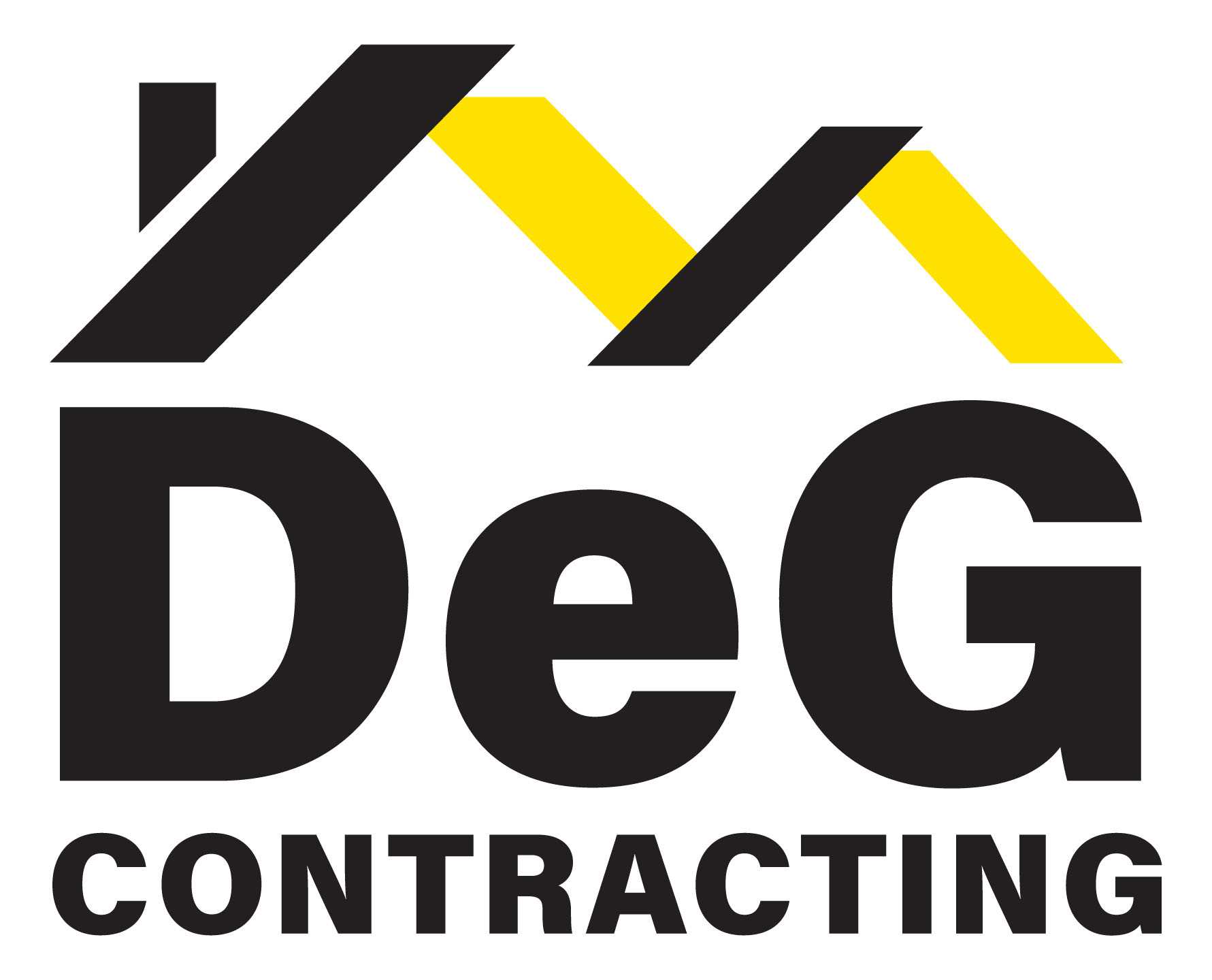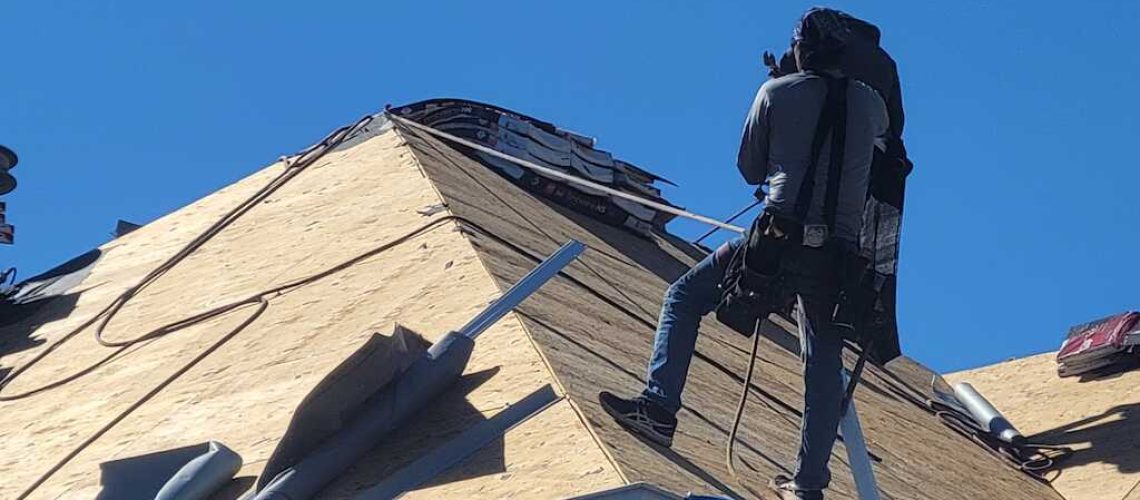Have you ever stood outside, gazing up at your roof, scratching your head, wondering just how many shingles it would take to cover that expanse? If you have, you’re not alone.
It’s a question that has puzzled many a homeowner. It’s not as simple as tossing a coin or making a wild guess. This is about precision and accuracy. We’re about to embark on an enlightening journey into the realm of roof measurements and shingles.
So, hang tight, folks! We’re about to turn you into a shingle-counting whiz, and by the end of this, you’ll be able to size up any roof with just a glance!
Keep reading to find out how to measure a roof for shingles!
Squares and Shingles: The Basics
Roofing isn’t just about slapping some shingles on a surface and calling it a day. It’s a world that has its own unique language, complete with terms and units that might seem strange at first. But once you get the hang of it, it’s pretty straightforward. Let’s dive into a few key concepts that form the cornerstone of roofing.
The Roofing ‘Square’
In the roofing world, a ‘Square’ isn’t your run-of-the-mill geometrical square. It’s a specific creature of the roofing realm. A ‘Square’ in roofing terms refers to a 10-foot by 10-foot patch of roof. That’s 100 square feet. When we talk about shingles, ‘Squares’ are our go-to unit of measurement.
Importance of Accurate Measurements
You might wonder why it’s so crucial to get these roof measurements spot on. Picture this: you’re all set to install a new shingle roof. You’ve got the shingles, your weekend’s free, and you’re raring to go. But, halfway through, you realize you’re short on shingles. Not by a bit, but by three entire ‘Squares’. Your roof is half-done, exposed to the weather, and you’re stuck waiting for more shingles. That’s a far cry from the ideal situation, right?
That’s where accurate roof measurements come in. They save you time, money, and a truckload of stress. Plus, they ensure the whole process is smooth sailing, making you look like a pro, even if it’s your first time handling a project like this.
Preparing for the Task Ahead
Before you start climbing up ladders and measuring roofs, you need to gear up properly. It’s not just about the physical tools, but also about understanding the process and knowing what you’re getting into.
The Right Tools for the Job
You’re going to need a few essentials: a tape measure, a reliable calculator, and a notepad and pen. The tape measure’s job is to size up the length and width of your roof. The calculator’s there to help with the number crunching (unless you’re a math prodigy!). The notepad and pen, they’re your faithful sidekicks, keeping track of all those measurements and calculations.
So, are you ready to tackle this? By now, you should have a clearer understanding of the importance of accurate roof measurements and their role in the world of shingles. This knowledge is a handy skill to have in your homeowner toolkit. Stick around, as we’re just getting started.
Step One: Measuring the Base
First things first, we’ve got to measure the base of the roof. This is where our trusty tape measure comes into play. We measure the length and the width of the building, including the overhangs. Remember, we’re not measuring just the living area, but the whole shebang.
Length and Width
Start with the length. Once you’ve got that number, move on to the width. These measurements are the foundation of everything else, so take your time and get them right. Don’t rush. Precision is the name of the game here.
Including the Overhangs
The overhangs matter, folks. They need shingles, too, so they’re part of our measurements. It’s easy to overlook them, but if you do, you’ll end up short on shingles. That’s a situation we want to avoid, remember?
Step Two: Calculating the ‘Squares’
Once we’ve got the measurements, it’s time to crunch some numbers. We’re figuring out how many ‘Squares’ our roof is. This isn’t rocket science, but it’s an important step in knowing how to measure a roof for shingles.
Multiplying Length by Width
We’re going back to elementary school math here, folks. We multiply the length by the width of our building (including those overhangs!). The result gives us the total area of the roof in square feet.
Dividing by 100
Once we’ve got the total area, we divide it by 100. Why 100? Because a ‘Square’ is 100 square feet. By dividing the total area by 100, we’re converting our measurement into ‘Squares’. This gives us the total number of ‘Squares’ our roof is.
Step Three: Adjusting for the Roof Pitch
Here’s where it gets a tad trickier. Roofs aren’t flat. They’ve got a slope or a pitch. We need to account for this pitch in our measurements because it increases the surface area of the roof.
Estimating the Pitch
Pitch is the rise of the roof over a 12-inch run. It’s usually described as a ratio. For example, if your roof rises 4 inches for every 12 inches of run, it’s got a 4:12 pitch.
Using a Pitch Factor
Once we’ve estimated the pitch, we use a pitch factor to adjust our measurement. This factor is a number that corresponds to the steepness of the roof. We multiply our total ‘Squares’ by this factor to get a more accurate measurement.
And there we have it! We’ve measured the base, calculated the ‘Squares’, and adjusted for the roof pitch. But we’re not done yet. Stay tuned for more.
Step Four: Accounting for Waste
Now, wouldn’t it be grand if every shingle fit perfectly, and we had zero waste? In an ideal world, maybe. But we live in reality, where things can get messy. That’s why we account for waste when measuring a roof for shingles.
Why Waste Matters
Shingles aren’t one-size-fits-all. We’ve got to cut them to fit corners, edges, and the ridge. These cuts lead to waste. It might not seem like much, but it adds up. If we don’t account for this waste, we might end up short on shingles.
Estimating the Waste
A good rule of thumb is to add 10% to your total ‘Squares’ for waste. If your roof has a lot of hips and valleys, bump it up to 15%. This estimation gives us a safety cushion, ensuring we have enough shingles to finish the job.
Step Five: Bonus Round—Ridge Caps and Starters
You’ve got the main roof area covered, but what about the ridge caps and starters? They’re like the cherry on top of your sundae. They protect the roof’s peak and edges and give it a finished look.
Ridge Caps
Ridge caps cover the peak of your roof where the two slopes meet. They need a different type of shingle, aptly named ridge cap shingles. To estimate how many you’ll need, measure the length of your roof’s peak. Divide it by the length of a ridge cap shingle, and you’ve got your number.
Starter Shingles
Starter shingles form the first row at the edge of your roof. They help seal the roof and prevent wind uplift. To estimate the amount, measure the total length of your roof edges. Divide it by the length of a starter shingle, and voila, you’ve got your estimate.
Step Six: Total Shingle Count
We’ve covered all the bases. Now it’s time to bring it all together. It’s time to find out just how many bundles of shingles we’re going to need.
Shingles Per ‘Square’
A ‘Square’ typically takes three bundles of standard three-tab shingles. But if you’re going for a different type of shingle, check the packaging. It should tell you how many bundles it takes to cover a ‘Square’.
Total Bundles
Multiply your total ‘Squares’ (including waste and extras for ridge caps and starters) by the number of bundles per ‘Square’. This gives you the grand total of shingle bundles you’ll need to order.
Step Seven: Pat Yourself on the Back
You’ve done it! You’ve successfully measured your roof for shingles. You’re ready to place your order and get started on that new shingle roof. Give yourself a pat on the back, folks. You’ve earned it.
We’re nearing the end of our journey, but we’ve got a few more pointers to share. Stick around for the final stretch.
Extra Tips for a Smooth Sailing Project
Now that you’ve got the hang of how to measure a roof for shingles, we’re going to toss a few bonus tips your way. These nuggets of wisdom can make the difference between a smooth project and a headache-inducing ordeal.
Always Order Extra
Even with accurate measurements and careful calculations, things can go sideways. Shingles can get damaged or lost, or you might make a few wrong cuts. It’s always better to have a few extra bundles on hand, just in case.
Safety First
Roofing isn’t a walk in the park. It can be risky, especially for high or steep roofs. Always prioritize safety. Use a sturdy ladder, wear non-slip shoes, and consider using safety harnesses. Better safe than sorry, right?
Consider Professional Help
If all this measuring and calculating seems overwhelming, or if your roof is particularly complicated, don’t hesitate to call in the pros. They’ve got the expertise and the right tools to get accurate measurements.
Recommended Next Steps
So, you’ve mastered how to measure a roof for shingles. What’s next on this exciting home improvement journey? Here are a few avenues you could explore:
Learn How to Install Shingles
You’ve got your measurements and your shingles; now it’s time to get to work. There are a plethora of resources online, from step-by-step guides to detailed video tutorials, that can walk you through the installation process. Understanding how to install shingles will not only save you money but also give you a satisfying sense of accomplishment.
Understand Roof Maintenance
Your new shingle roof is an investment, and like any investment, it requires care and maintenance. Understanding roof maintenance will help you prolong the life of your roof and prevent minor issues from turning into major headaches. Learn about routine inspections, cleaning practices, and signs of damage to keep your roof in top-notch condition.
Explore Different Shingle Types
As you delve deeper into the world of roofing, you’ll discover a variety of shingle types, each with its own unique characteristics. From asphalt and wood to metal and slate, your options are numerous. Take some time to understand the benefits and drawbacks of each type. Consider factors like durability, aesthetics, cost, and climate suitability to find the perfect shingles for your home.
Connect With Local Roofing Community
Networking with local roofing contractors and suppliers in O’Fallon, St. Charles, Chesterfield, Wentzville, and Wildwood, Missouri, could also be beneficial. You can exchange insights, get professional advice, and even land some sweet deals on roofing materials.
Now You Know How to Measure a Roof for Shingles!
So, you started this journey wondering how to measure a roof for shingles, and now you’re practically a pro. You’ve got a solid understanding of the process, the lingo, and the necessary calculations. You’re ready to take on that new shingle roof project with confidence.
Remember, this is more than just about getting your measurements right. It’s about ensuring a smooth installation process. It’s about avoiding unnecessary delays and costs. But most importantly, it’s about equipping yourself with the knowledge and skills to improve and maintain your home. So, go ahead, order those shingles, and get ready to transform your roof!
And, hey, if you ever find yourself scratching your head over another home improvement project, remember this journey. Remember that with a bit of patience and the right guidance, you can tackle anything. You’re a doer, a problem-solver, and now, a roof-measuring whiz.
We hope this guide serves you well, but please get in touch if you want to get the professionals on the job!

